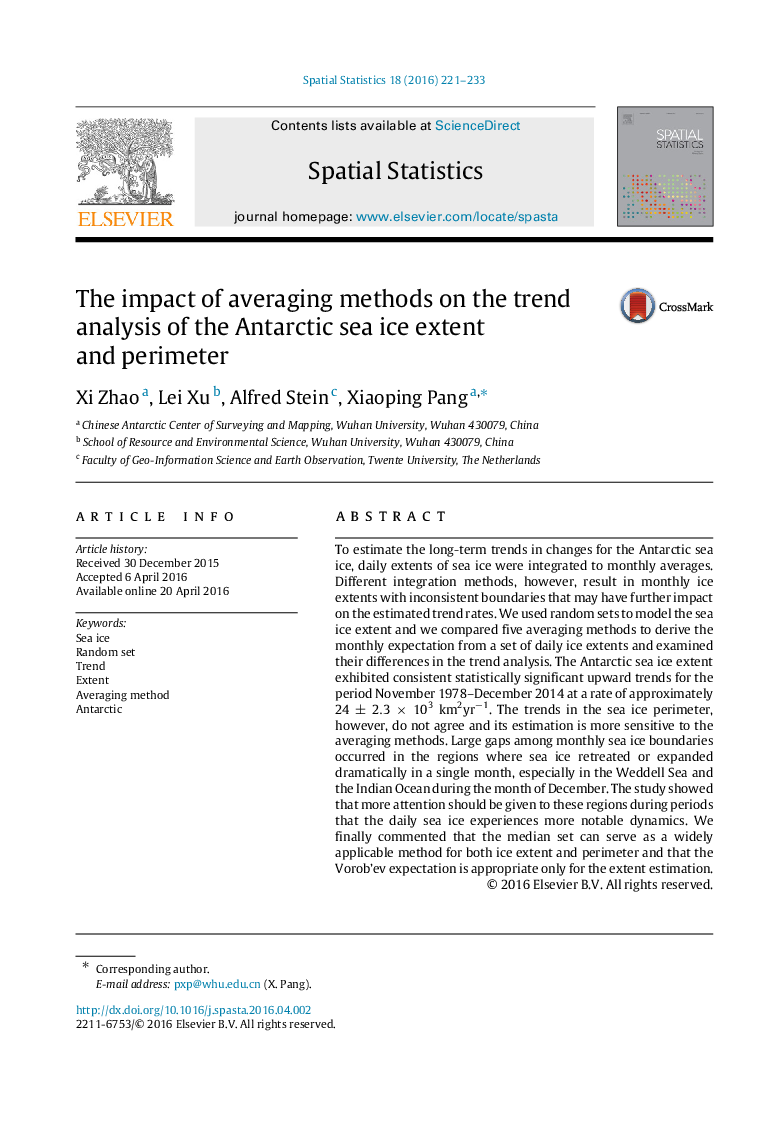| Article ID | Journal | Published Year | Pages | File Type |
|---|---|---|---|---|
| 5119070 | Spatial Statistics | 2016 | 13 Pages |
To estimate the long-term trends in changes for the Antarctic sea ice, daily extents of sea ice were integrated to monthly averages. Different integration methods, however, result in monthly ice extents with inconsistent boundaries that may have further impact on the estimated trend rates. We used random sets to model the sea ice extent and we compared five averaging methods to derive the monthly expectation from a set of daily ice extents and examined their differences in the trend analysis. The Antarctic sea ice extent exhibited consistent statistically significant upward trends for the period November 1978-December 2014 at a rate of approximately 24±2.3Ã103km2yrâ1. The trends in the sea ice perimeter, however, do not agree and its estimation is more sensitive to the averaging methods. Large gaps among monthly sea ice boundaries occurred in the regions where sea ice retreated or expanded dramatically in a single month, especially in the Weddell Sea and the Indian Ocean during the month of December. The study showed that more attention should be given to these regions during periods that the daily sea ice experiences more notable dynamics. We finally commented that the median set can serve as a widely applicable method for both ice extent and perimeter and that the Vorob'ev expectation is appropriate only for the extent estimation.
